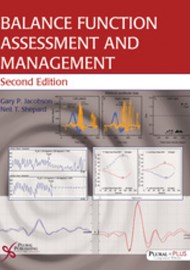I read the title with some concern as I would prefer my test interpretation to be ‘accurate’ rather than ‘rapid’, nevertheless the content of the book delivers what one would anticipate is intended, which is an easy to read outline of balance tests and what abnormal results would mean.
We begin with a useful chapter on vestibular anatomy and physiology which is readable but still a fairly thorough overview. We also have a good chapter emphasising the high importance of a detailed vestibular history, along with explanations of what pathology may be implied by each history detail.
We are then gently lowered into a succession of chapters relating to each of the main areas of vestibular testing, details on what abnormalities may be seen, and what they tell us about the patient’s vestibular system, although without a strong sense of the relative reliability of each. There is also a table of bullet points for each test for quick reference. These chapters are both clear and concise whilst at the same time quite thorough, and therefore a good source for those with some limited prior knowledge wanting to build on this.
There is also a DVD included of eye movement videos, with some good examples of abnormal movements. The book’s entire focus is on assessment and testing, and so there is no information on vestibular rehabilitation or other forms of treatment, but that was clearly never the intention of this book. There is also no coverage of basic clinical assessment tests, or some of the less-often-used tests such as electrocochleography or vibration induced nystagmus.
Whilst not the final and complete word on the subject, the emphasis here is towards being concise and readable, and this is a great read for those wanting to gain understanding of all the main balance function tests or as a reference to look up when confronted by an unfamiliar configuration of test results.




